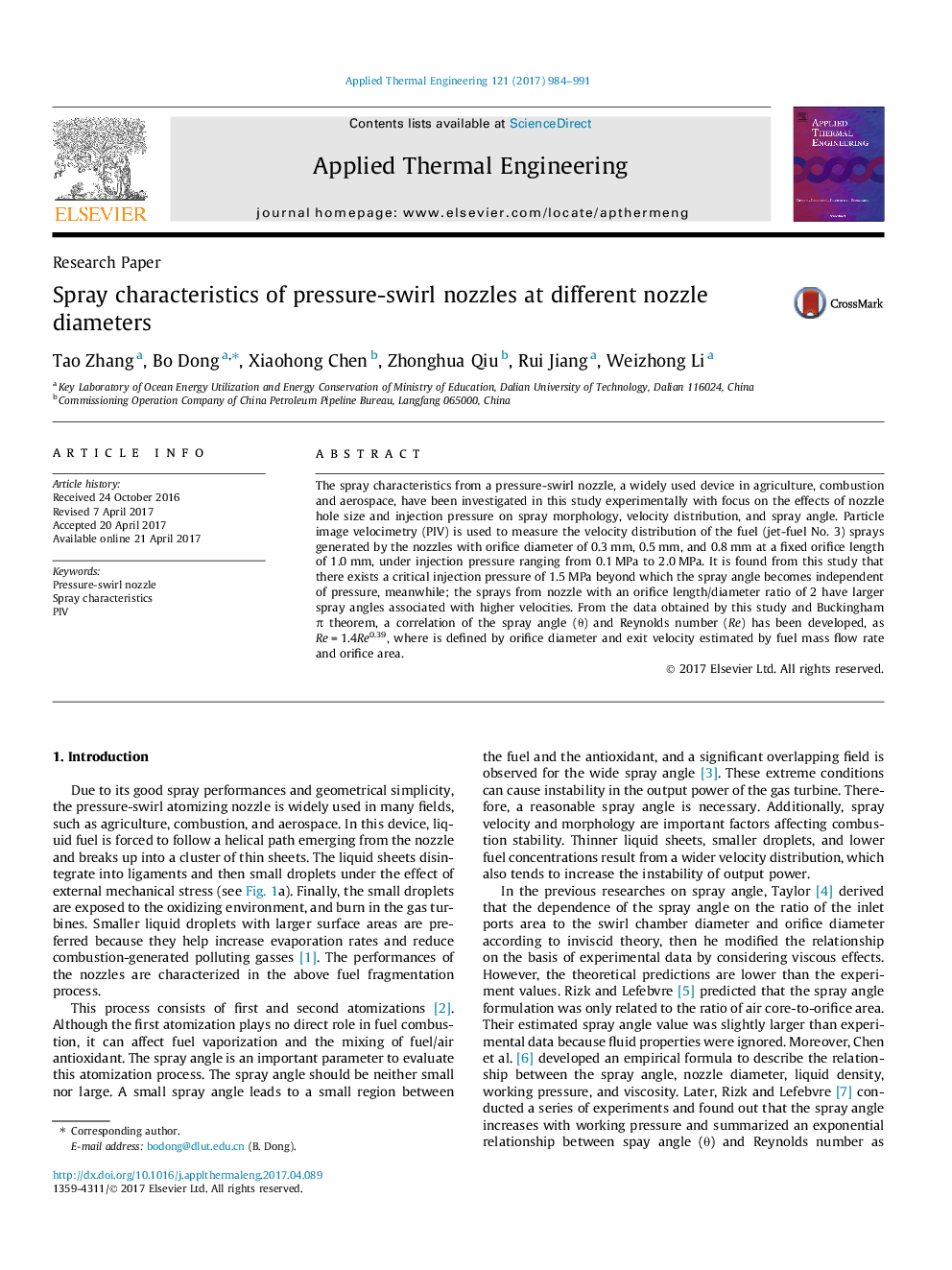| Article ID | Journal | Published Year | Pages | File Type |
|---|---|---|---|---|
| 4991146 | Applied Thermal Engineering | 2017 | 8 Pages |
Abstract
The spray characteristics from a pressure-swirl nozzle, a widely used device in agriculture, combustion and aerospace, have been investigated in this study experimentally with focus on the effects of nozzle hole size and injection pressure on spray morphology, velocity distribution, and spray angle. Particle image velocimetry (PIV) is used to measure the velocity distribution of the fuel (jet-fuel No. 3) sprays generated by the nozzles with orifice diameter of 0.3 mm, 0.5 mm, and 0.8 mm at a fixed orifice length of 1.0 mm, under injection pressure ranging from 0.1 MPa to 2.0 MPa. It is found from this study that there exists a critical injection pressure of 1.5 MPa beyond which the spray angle becomes independent of pressure, meanwhile; the sprays from nozzle with an orifice length/diameter ratio of 2 have larger spray angles associated with higher velocities. From the data obtained by this study and Buckingham Ï theorem, a correlation of the spray angle (θ) and Reynolds number (Re) has been developed, as Re = 1.4Re0.39, where is defined by orifice diameter and exit velocity estimated by fuel mass flow rate and orifice area.
Related Topics
Physical Sciences and Engineering
Chemical Engineering
Fluid Flow and Transfer Processes
Authors
Tao Zhang, Bo Dong, Xiaohong Chen, Zhonghua Qiu, Rui Jiang, Weizhong Li,
